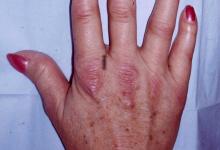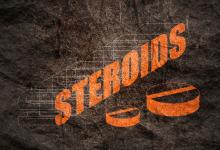Hitting the Target: T2T Therapy in SLE Save

Treat-to-target strategies are not a new concept in rheumatology. It has shown to improve patient outcomes and quality of life in rheumatoid arthritis and psoriatic arthritis and is now being increasingly adopted not only in SLE research but also in clinical practice.
This article reviews key highlights from Dr. Morand’s lecture on Treat to Target in SLE: Current Evidence and Future Directions, presented during one of the APLAR 2025 Plenary Sessions. According to Prof. Eric Morand, the ultimate goal in SLE treatment is complete remission, however, not all patients are able to achieve this state. Through the treat-to-target approach, achieving a low disease activity (LLDAS) is an acceptable target and a protective alternative goal.
The Lupus Low Disease Activity State or LLDAS is defined by the following: (1) SLEDAI-2K < 4, with no activity in major organ systems (renal, CNS, cardiopulmonary, vasculitis, fever) and no hemolytic anemia or gastrointestinal activity; (2) No new features of lupus disease activity compared with the previous assessment; (3) PGA (scale 0-3) <1; (4) Prednisolone <7.5 mg; and (5) well tolerated standard maintenance doses of immunosuppressive drugs and approved biological agents. In contrast, the DORIS definition of remission in SLE is defined by: (1) Clinical SLEDAI = 0; (2) PGA <0.5 (0-3) irrespective of serology and the patient may be on antimalarials, low-dose glucocorticoids (prednisolone <5 mg/day), and/or stable immunosuppressives including biologics.
In his talk, Dr. Morand reviewed data supporting the evidence that patients in LLDAS and DORIS remission were associated with reduced damage accrual and flare. Based on the results of the multinational prospective cohort study by V Golder et. Al (2024), the more time at target – sustained LLDAS or remission longer than 3 months – was associated with reduced damage accrual. Consequently, longer durations of sustained LLDAS or remission had increased protective associations. LLDAS and DORIS remission are also associated with reduced mortality (Kandane-Rathnayake R, et al. 2022) and a quicker LLDAS attainment was associated with better outcomes (Kikuchi et al. 2022).
Dr. Morand also emphasized that LLDAS and DORIS remission are not the same thing, they are concentric, but not redundant. This means that not all patients in LLDAS are also in remission, and this was described by data from Kandane-Rathnayake R, et al (2022) showing 31% of visits in LLDAS were not in DORIS remission. From the same paper, he also points out that steroid-free remission was associated with greatly reduced mortality.
By briefly going thru the SLE treatment guidelines, Dr. Morand also highlighted the importance of intensifying treatment with immunosuppressives and approved biologic agents like Belimumab or Anifrolumab as a treat-to-target strategy in achieving LLDAS or DORIS remission.
Treat-to-target strategies such as achieving LLDAS or DORIS remission have shown significant beneficial effects against flare, damage accrual, health-related quality of life and mortality in SLE patients. Adopting these approaches offer rheumatologists achievable evidence-based targets especially in the setting where complete remission may not be possible despite standard therapies.










If you are a health practitioner, you may Login/Register to comment.
Due to the nature of these comment forums, only health practitioners are allowed to comment at this time.